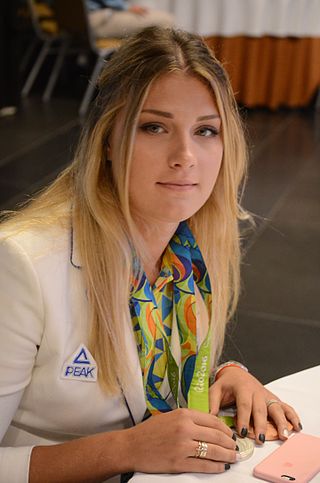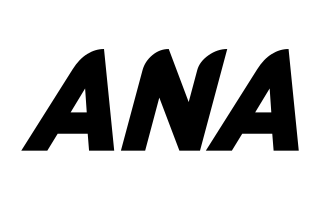Related Research Articles

Fencing is a combat sport that features sword fighting. The three disciplines of modern fencing are the foil, the épée, and the sabre ; each discipline uses a different kind of blade, which shares the same name, and employs its own rules. Most competitive fencers specialise in one discipline. The modern sport gained prominence near the end of the 19th century and is based on the traditional skill set of swordsmanship. The Italian school altered the historical European martial art of classical fencing, and the French school later refined that system. Scoring points in a fencing competition is done by making contact with an opponent.

A parry is a fencing bladework maneuver intended to deflect or block an incoming attack.

A foil is one of the three weapons used in the sport of fencing. It is a flexible sword of total length 110 cm (43 in) or under, rectangular in cross section, weighing under 500 g (18 oz), with a blunt tip. As with the épée, points are only scored by making contact with the tip. The foil is the most commonly used weapon in fencing.

The épée, also rendered as epee in English, is the largest and heaviest of the three weapons used in the sport of fencing. The modern épée derives from the 19th-century épée de combat, a weapon which itself derives from the French small sword.

The Fédération Internationale d'Escrime, commonly known by the acronym FIE, is the international governing body of Olympic fencing. Today, its head office is at the Maison du Sport International in Lausanne, Switzerland. The FIE is composed of 155 national federations, each of which is recognized by its country's Olympic Committee as the sole representative of Olympic-style fencing in that country.

A power cable is an electrical cable, an assembly of one or more electrical conductors, usually held together with an overall sheath. The assembly is used for transmission of electrical power. Power cables may be installed as permanent wiring within buildings, buried in the ground, run overhead, or exposed. Power cables that are bundled inside thermoplastic sheathing and that are intended to be run inside a building are known as NM-B.
Classical fencing is the style of fencing as it existed during the 19th and early 20th centuries. According to the 19th-century fencing master Louis Rondelle,
A classical fencer is supposed to be one who observes a fine position, whose attacks are fully developed, whose hits are marvelously accurate, his parries firm, and his ripostes executed with precision. One must not forget that this regularity is not possible unless the adversary is a party to it. It is a conventional bout, which consists of parries, attacks, and returns, all rhyming together.

The sabre is one of the three disciplines of modern fencing. The sabre weapon is for thrusting and cutting with both the cutting edge and the back of the blade.

The following outline is provided as an overview of and topical guide to fencing:
Rapier Combat is a style of historical fencing practiced in the Society for Creative Anachronism (SCA). The primary focus is to study, replicate and compete with styles of rapier sword-fighting found in Europe during the Renaissance period, using blunted steel swords and a variety of off-hand defensive items. Participants wear period clothing while competing, along with or incorporating protective equipment for safety. In the April 2020 update of the rules, the sport was renamed 'Fencing Combat'.
In fencing, a body cord serves as the connection between a fencer and a reel of wire that is part of a system for electrically detecting that the weapon has touched the opponent. There are two types: one for epee, and one for foil and sabre.
The Amateur Fencers League of America (AFLA) was founded on April 22, 1891, in New York City by a group of fencers seeking independence from the Amateur Athletic Union. As early as 1940, the AFLA was recognized by the Fédération Internationale d'Escrime (FIE) and the United States Olympic Committee as the national governing body for fencing in the United States.
Fencing practice and techniques of modern competitive fencing are governed by the Fédération Internationale d'Escrime (FIE), though they developed from conventions developed in 18th- and 19th-century Europe to govern fencing as a martial art and a gentlemanly pursuit. The modern weapons for sport fencing are the foil, épée, and sabre.

Olha Hennadiivna Kharlan, also known as Olga Kharlan, is a Ukrainian sabre fencer. She is a four-time individual women’s world sabre champion, and a four-time Olympic medalist. She has been ranked #1 in the world in women's sabre for five years: in 2012–14, 2017–18, and 2019–21.

Elastomeric connectors, also known by the registered trademark ZEBRA connectors, consist of alternating conductive and insulating regions in a rubber or elastomer matrix to produce overall anisotropic conductive properties. The original version consisted of alternating conductive and insulating layers of silicone rubber, cut crosswise to expose the thin layers. They provide high-density redundant electrical paths for high reliability connections. One of the first applications was connecting thin and fragile glass liquid-crystal displays (LCDs) to circuit boards in electronic devices, as little current was required.

Tactics are very important to playing well in modern fencing and although technique is important in the sport, using an array of tactics will help fencers make the most of that technique.
This is a glossary of terms used in fencing.

Shin A-lam is a South Korean épée fencer.

Authorised Neutral Athlete (ANA) is a capacity under which athletes can compete at international sporting competitions without representing their nations, as is standard convention under the Olympic Charter. As of August 2022, only Russian and Belarusian athletes of some sports have competed or are competing within the ANA capacity.

The fencing competitions at the 2024 Summer Olympics in Paris are scheduled to run from 27 July to 4 August at the Grand Palais strip. A total of 212 fencers, with an equal distribution between men and women, will compete across twelve medal events at the Games. For the second straight time, Paris 2024 will witness both men and women fence against each other in the individual and team events held in all three weapons.
References
- ↑ "International Fencing Federation Technical Rules - The International Fencing Federation official website" (PDF). International Fencing Federation - The International Fencing Federation official website.
- ↑ "Home". BRITISH FENCING.
- ↑ Biondi, Matt (2024-05-27). "What Is A Piste In Fencing?". fencingtip.com. Retrieved 2024-06-26.
